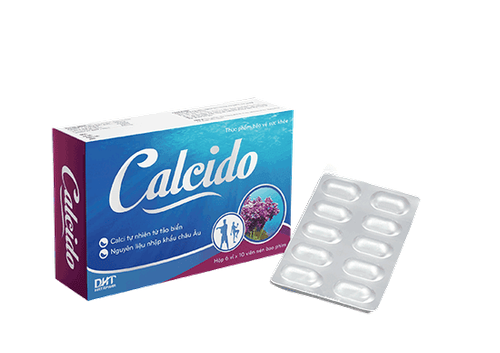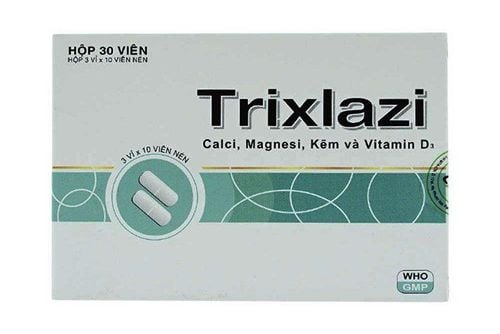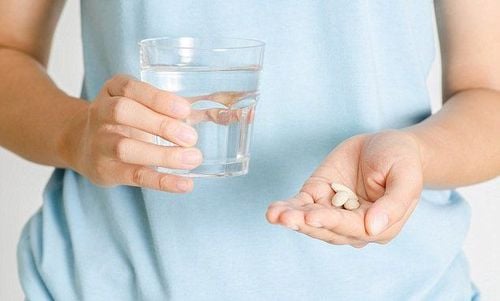This is an automatically translated article.
Vitamin D is an essential nutrient that has been shown by numerous studies to have important health benefits. Although vitamin D is easily synthesized from food and sunlight, an estimated 40%-75% of people are deficient in Vitamin D.
1. Factors affecting absorption of vitamin D
Many factors affect the skin's ability to produce vitamin D, including season, time of day, latitude, air pollution, cloud cover, sunscreen, body parts exposed to the face weather, skin color and age. Dermatologists recommend using sunscreen and getting vitamin D from medications or supplements rather than sun exposure to avoid the risk of getting the sun's harmful rays.
Vitamin D deficiency can happen for a number of reasons:
You are not getting the recommended amount of vitamin D according to age. This can happen if you are a vegan since most of the natural sources of vitamin D are found in animals, including fish and fish oils, egg yolks, milk, and beef liver. Limit exposure to sunlight. Because the body makes vitamin D when the skin is exposed to sunlight, you may be at risk for a deficiency if you are often at home, live in northern latitudes, wear long-sleeved robes, or cover your head for religious reasons. education or due to a working environment that is not often exposed to the sun. Dark skin: Melanin pigments reduce the skin's ability to make vitamin D when exposed to the sun. The kidneys cannot convert vitamin D to its active form. As we age, the kidneys decrease their ability to convert vitamin D, thereby increasing the risk of vitamin D deficiency. A limited digestive system absorption of vitamin D due to Crohn's disease, cystic fibrosis, and celiac disease, can affect affects the intestine's ability to absorb vitamin D from food. Fat.

Hạn chế tiếp xúc với ánh sáng mặt trời là một trong những nguyên do gây thiếu vitamin D
2. Symptoms of vitamin D deficiency
Symptoms of bone pain and muscle weakness can be a symptom of vitamin D deficiency. However, for many people, symptoms can be more difficult to detect. However, even without symptoms, too little vitamin D can cause other health risks such as:
Increased risk of death from cardiovascular disease Cognitive impairment in older adults Severe asthma in children I Cancer.
3. Where is vitamin D found?
The sun is an excellent source of vitamin D, but it's difficult to quantify how much vitamin D you get from sun exposure, especially since the increased risk of skin cancer may outweigh the benefits. again. Therefore, foods that are recommended by experts to provide vitamin D include:
Fatty fish such as tuna, mackerel and salmon Foods fortified with vitamin D such as dairy products, orange juice, soy milk and cereal Beef liver Cheese Egg yolk.

Vitamin D có chứa trong nhiều loại thực phẩm hằng ngày
4. Supplement vitamin D properly
The Food and Nutrition Board of the National Academy of Sciences has established the Recommended Dietary Allowance (RDA) for vitamin D to represent An amount sufficient daily to maintain bone health and normal calcium metabolism in healthy individuals. The RDA for vitamin D uses International Units (IU) and micrograms (mcg); The biological activity of 40 IU is equivalent to 1 mcg. Although sunlight can be a major source of vitamin D for some people, the RDA for vitamin D is therefore established on the basis of minimal sun exposure.
5. How long to take vitamin D?
Adults by mouth
For people with vitamin D deficiency: 50,000 IU weekly for 6-12 weeks. To prevent osteoporosis: 400-1000 IU/day of vitamin D3 (also known as cholecalciferol) in older adults. Usually it is taken with 500-1200 mg of calcium per day. Some experts recommend higher doses of 1000-2000 IU daily in combination with calcitriol 0.43-1.0 mcg/day for a maximum duration of 36 months. To prevent bone loss from corticosteroid use: 0.25-1.0 mcg/day of vitamin D in the form known as calcitriol or alfacalcidol for 6-36 months. For heart failure: 800 IU/day of vitamin D alone in the form of cholecalciferol or with 1000 mg/day of calcium for 3 years. Or 400 IU/day of vitamin D in the form of cholecalciferol used with 1000 mg/day of calcium in postmenopausal women. For bone loss due to hyperparathyroidism: 800 IU/day of vitamin D in the form of cholecalciferol for 3 months. Multiple Sclerosis: 400 IU daily of vitamin D. To prevent respiratory infections: 300-4000 IU of vitamin D in the form of cholecalciferol for 7 weeks to 13 months. To prevent tooth loss in the elderly: 700 IU daily of vitamin D in the form of cholecalciferol used in combination with calcium 500mg/day for 3 years. Vitamin D for infants
The American Academy of Pediatrics recommends the following:
If you are breastfeeding give your baby 400 IU of vitamin D daily - starting soon after birth. Continue to give vitamin D to your baby until the baby is weaned from breast milk and the baby continues to drink about 1 liter of milk per day with vitamin D fortified formula or after 12 months of age, she has been drinking whole cow's milk, then stop. If your baby is eating less than 1 quart of vitamin D-fortified formula per day, give her 400 IU of liquid vitamin D per day - starting in the first few days after birth. Continue giving your baby vitamin D until he is eating at least 1 quart of milk per day.
Please dial HOTLINE for more information or register for an appointment HERE. Download MyVinmec app to make appointments faster and to manage your bookings easily.
Reference source: Webmd.com












